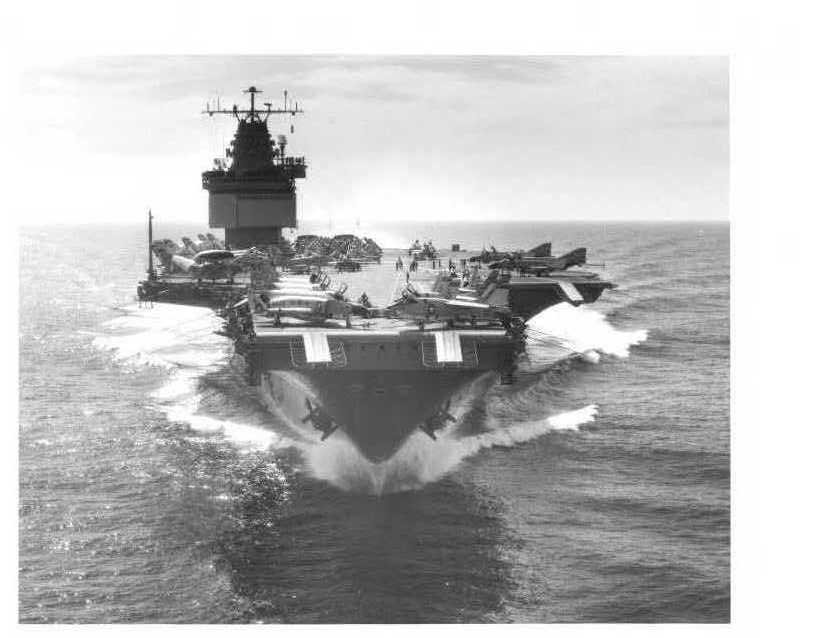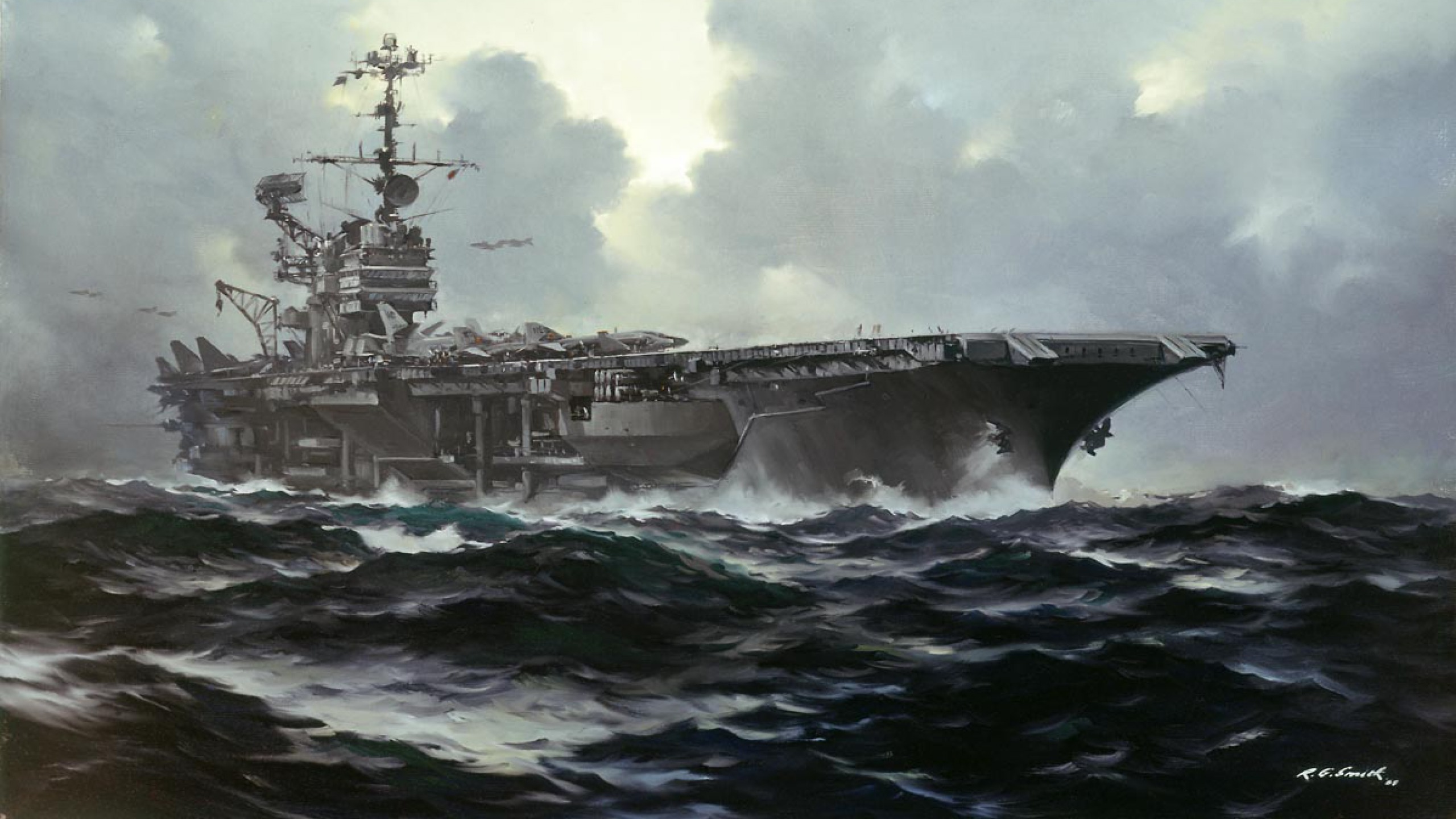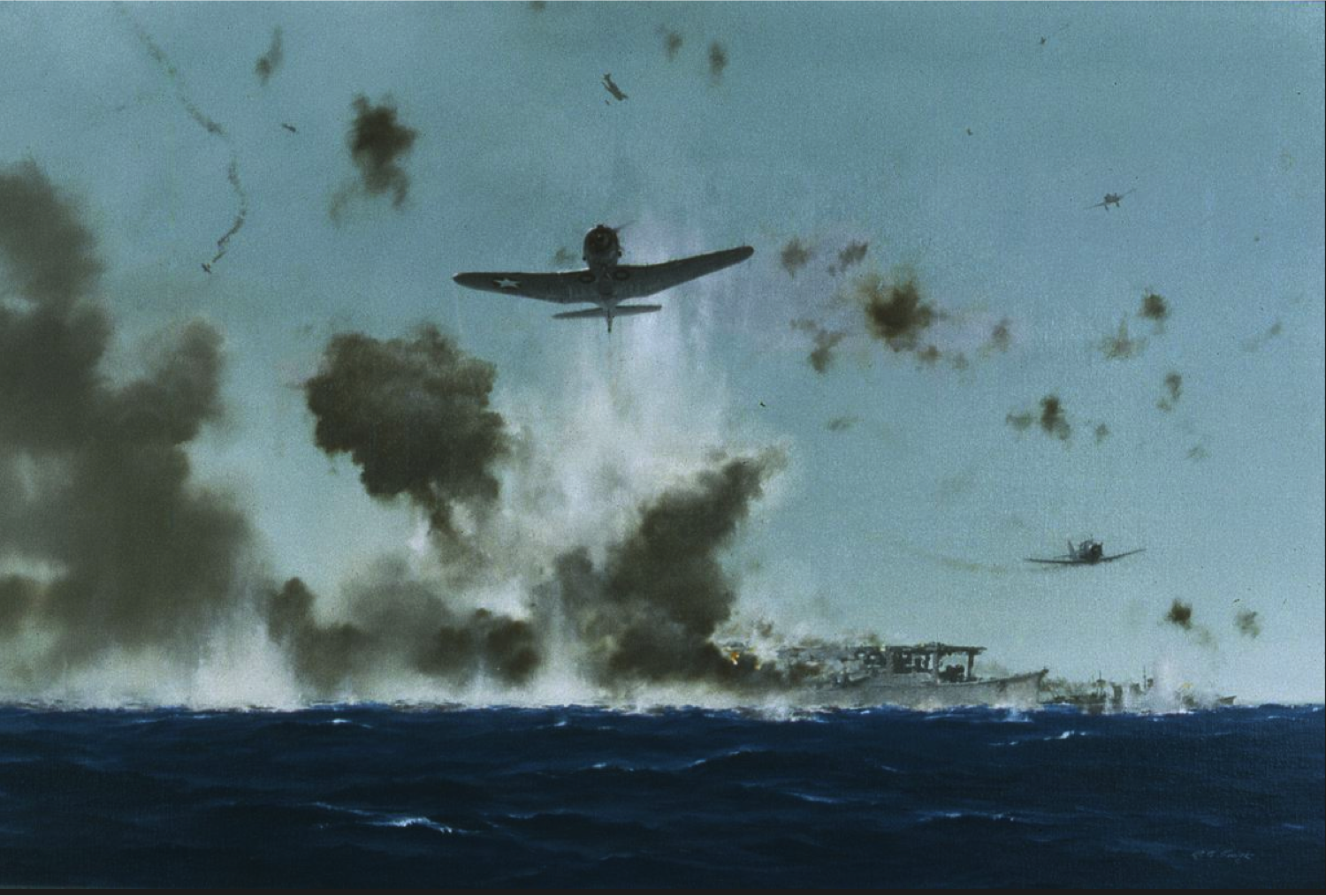Flightdeck Friday: USMC WWII MIA Return Edition

The Official press release:
Marine Pilot Missing In Action From WWII Is Identified
The Department of Defense POW/Missing Personnel Office (DPMO) announced today that the remains of a U.S. serviceman, missing in action from World War II, have been identified and will be returned to his family for burial with full military honors
He is Maj. Marion R. McCown Jr., U.S. Marine Corps, of Charleston, S.C. He will be buried on Jan. 18 in Charleston.
Representatives from the Marine Corps Mortuary Office met with McCown’s next-of-kin to explain the recovery and identification process and to coordinate interment with military honors on behalf of the secretary of the Navy.
On Jan. 20, 1944 McCown was the pilot of an F-4U Corsair aircraft that failed to return from a combat mission over Rabaul, New Britain, Papua New Guinea.
In 1991, a Joint POW/MIA Accounting Command (JPAC) team excavated an F-4U crash site in Rabaul and recovered human remains and McCown’s identification tag. However, forensic science at that time precluded an identification.
In 2006, a JPAC team surveyed the crash site in preparation for a recovery. While at the site, a villager living in the area turned over to the team human remains that he claimed to have recovered from the site. In 2008, another JPAC team excavated the site and recovered additional human remains.
Among other forensic identification tools and circumstantial evidence, scientists from JPAC used dental comparisons in the identification of McCown’s remains.

And now the rest of the story:

Rabaul. Few geographic locations or names carried the cache of raw challenge and threat during the war. Situated on the north-eastern peninsula of New Britain, Rabaul was founded by the Germans in 1910 as they recognized the utility availaed of its large, deep water harbor that was afforded natural protection from both the elements and man by its surrounding high, volcanic pumice hills. Captured by British Commonwealth forces, it became part of Australia’s mandated territory of New Guinea after the war. Western militaries were not the only ones aware of the strategic utility of the port and surrounding territory – the Japanese military was very much aware of its potential. In February 1942, Japanese forces swept away Australian forces as the juggernaut launched with the invasion of China and most recently, the bombing of Pearl harbor and occupation of the Philippines continued its inexorable march through the Solomons in a bid to isolate and eventually nvade Australia.

Rabaul – the “unsinkable aircraft carrier.” Rapidly, after the Japanese occupation forces settled in, additional troops, aircraft and ships arrived. Five airfields were built to serve the several hundred land-based fighters and bombers that would offer airborne protection and far-ranging strikes throughout the area, controlling the seas and skies above. From the harbor, warships and troop carriers sailed to further the reach of the Empire. And from afar, the Allies pondered and planned. By January of 1944, those plans – part of Operation “Cartwheel” were well underway. It started with the Battle of Coral Sea when the Japanese thrust towards Australia was blunted in the first beyond visual range engagement of two fleets. Continuing with the vicious land- and sea-battles on and around Guadalcanal and up the New Georgia chain of islands towards Bougainville, Allied forces established air and seabases along the way. A noose was being built around Rabaul and the time was coming to tighten it.
One of the bases established was on a south-eastern point of land on the volcanic island of Vella Lavella. Here, VMF-321 “Hell’s Angels,” stood up in February 1943, would establish their base of operations. The weapon of choice – the F4u-1 Corsair, known by the Japanese as “the Whistling Death” From this base, VF-321 and others, like the infamous “Black Sheep” of VMF-214, would fan out and start to sweep the skies of Japanese opposition. Partners to this effort were the carriers of the Fifth Fleet and land air forces of the Fifth Air Force. The latter, notorious for the development of skip-bombing bombers taking a toll of shipping and which would prove signatory in the Battle of the Bismarck Sea while carrier aircraft swept into the lair itself in November 1943, twice striking the assembled fleet in the Rabaul harbor and effectively ending its usefulness as a staging point to threaten operations int he Solomons.
Still, to ensure the by-passed stronghold would not resurrect itself, regular bombing strikes were carried out by land-based Liberators and Mitchells, escorted by P-38s and Marine F4us. And it is today, January 20th, 1944 that Major Marion R. McCown, USMC found himself at the controls of F4U-1 BuNo 17448 inbound to Rabaul. The Charleston, South Carolina native had joined shortly after Pearl Harbor. Having previously received his private pilot’s license while attending Georgia Tech, it wa clear form the beginning his intention was to become a “flying leatherneck.” Having been stationed for almost a year now at Vella Lavella, he had come to appreciate the beauty of the area as well as the lethality of the action., having a hand in the 39 Japanese aircraft downed by VF-321 up that point since their commissioning. However, as demonstrated just two days earlier, his luck was not only good, it was holding. Then, returning from another mission to Rabaul, he had experienced engine failure. Ditching over 50 nm from his base, he was found in short order by a passing PT boat and returned. Now, the 27-yr old was back in the skies over Rabaul and, with eleven of his other squadronmates, found themselves in a swirling dogfight against forty Japanese Zeros. As the dogfight progressed, and the air filled with lead, smoke fire and parachutes, he was last seen on the tail of a Zero with another closing on him. A fellow squadronmate claimed to have shot the Zero off his tail, but McCown was not seen again. Three others were also lost in the skies over Rabaul that day.

In 1991, a forensic team received a set of dogtags and some bone fragments, but they were insufficient to verify the identity. Later, in 2006, a team returning to the site to prepare it for recovery discovered a partial parachute, and, along with remains passed by a local who had recovered them rom the site, they excavated more remains and the aircraft remnants, garnering enough to positively identify it as the crash site of Major McCown’s F4u. This was fortuitous as a 1997 eruption of the volcano on the west end of the peninsula had caused substantial destruction to a widespread area. He is scheduled to be interred next to his mother and grandparents on January 18, 2009 in the Unitarian Church of Charleston’s cemetery.





For those interested in hearing more on what DOD is doing in this area there is a fascinating two part podcast on the Museum of the United States Air Force website (http://www.nationalmuseum.af.mil/av/lectures.asp)
“Accounting for America’s Missing Heroes”
Former Air Force sergeant and co-author of the original story for the major motion picture, Good Morning, Vietnam! Adrian Cronauer discusses his work with the Defense POW/Missing Personnel Office. This Wings & Things Guest Lecture took place on Sept. 16, 2008.
Dear Steeljaw Scribe,
I am the reporter who covered Maj. McCown’s recovery last year in Papua New Guinea. I would love to get in contact with you to ask you a few questions about another MIA project I am woking on.
Hope to link up soon.
Best,
Bryan Bender
Boston Globe
202.369.6856
Bryan:
I’ll drop a note offline your way…
w/r,
SJS
Recently I came across a group picture of VMF-215 on an internet site. My father Harry Brislin was a member of ground echelon. There are no names with the photo so I was wondering where I might find someone who has the original or at least identification. The site is http://www.afwing.com/intro/f4u/legend/11.htm
Thanks